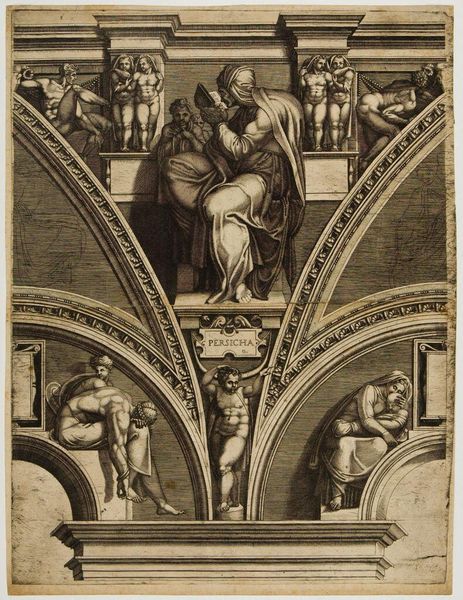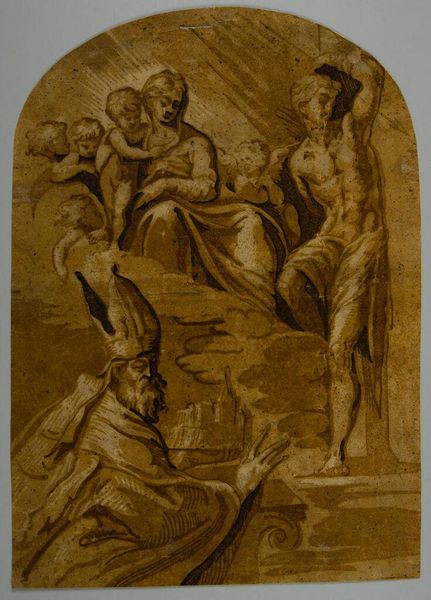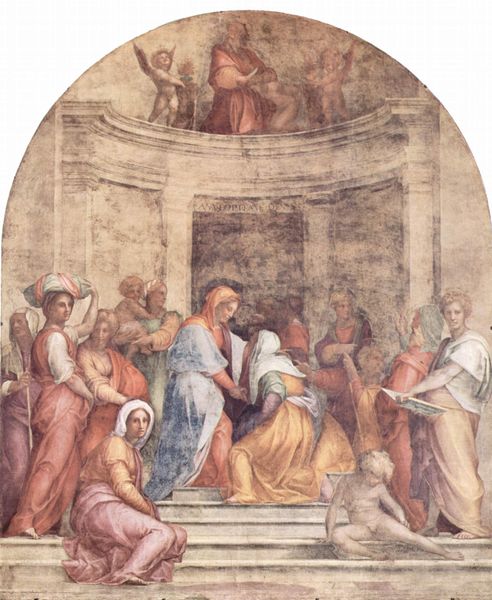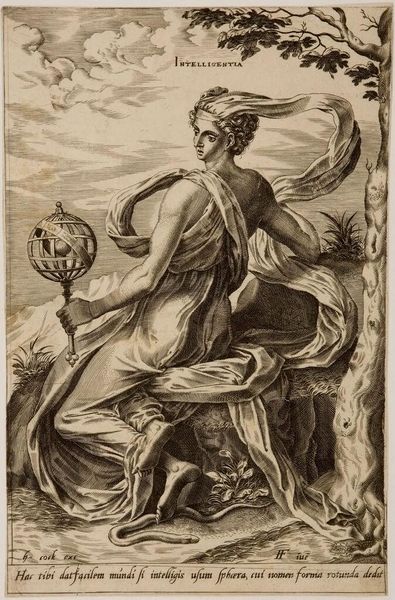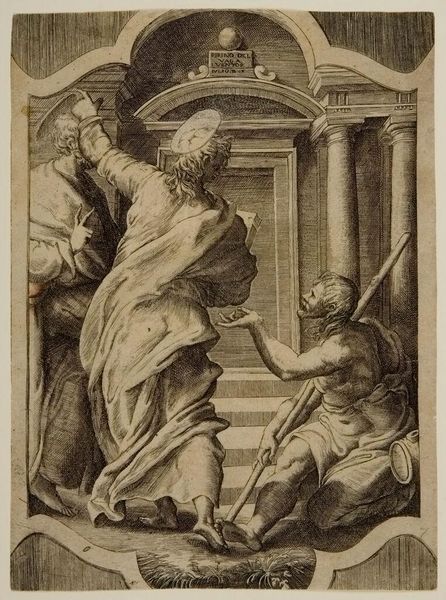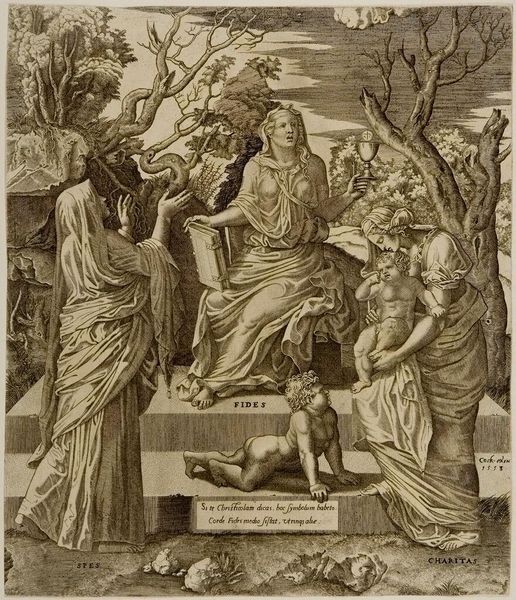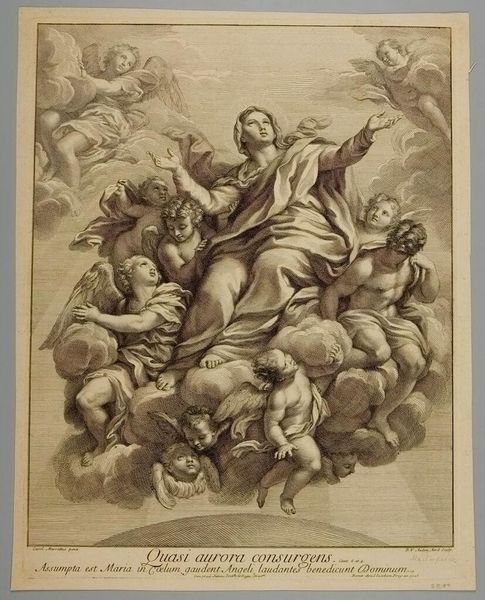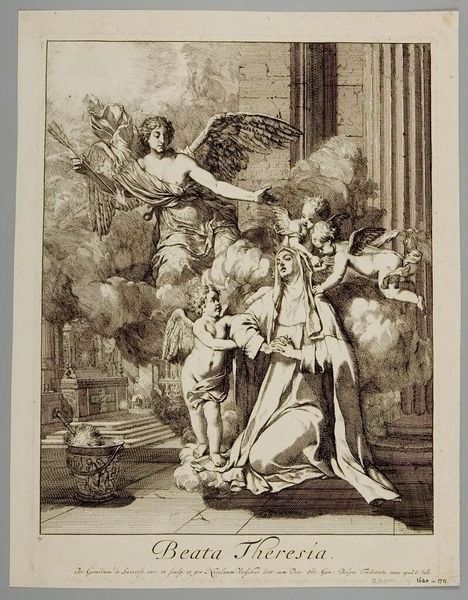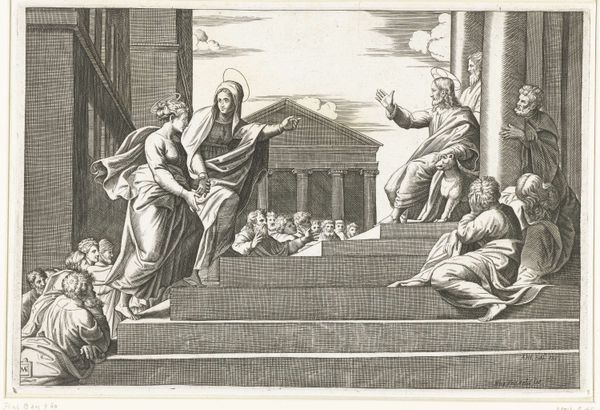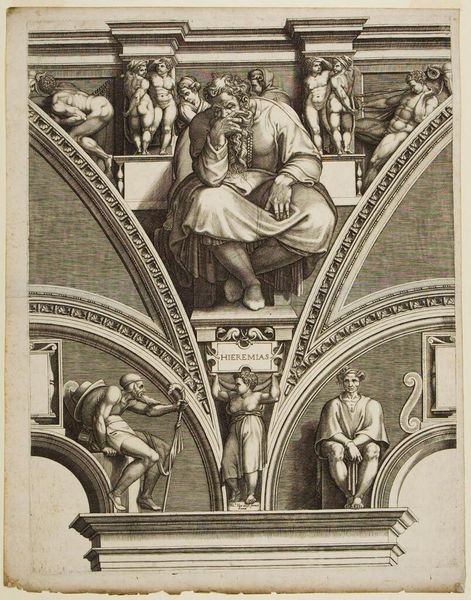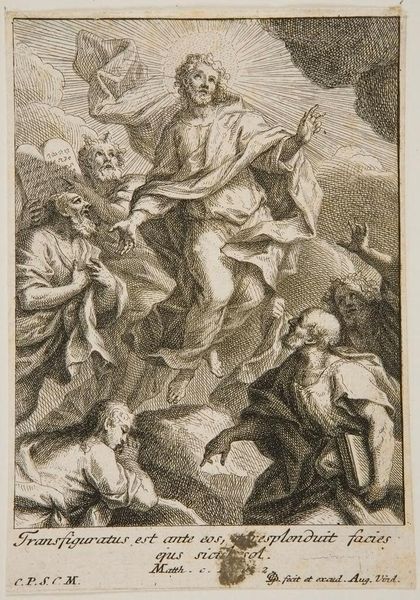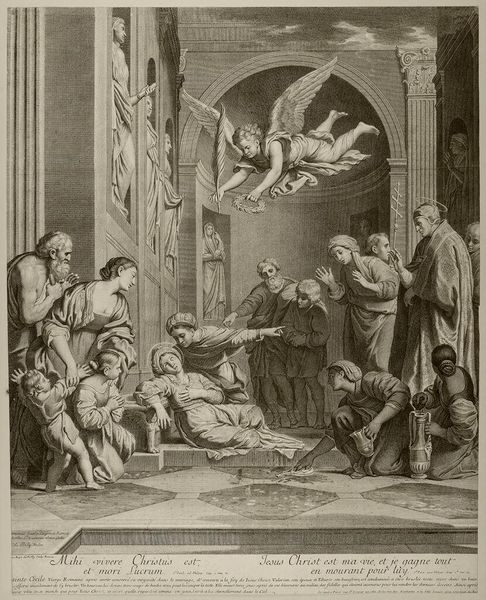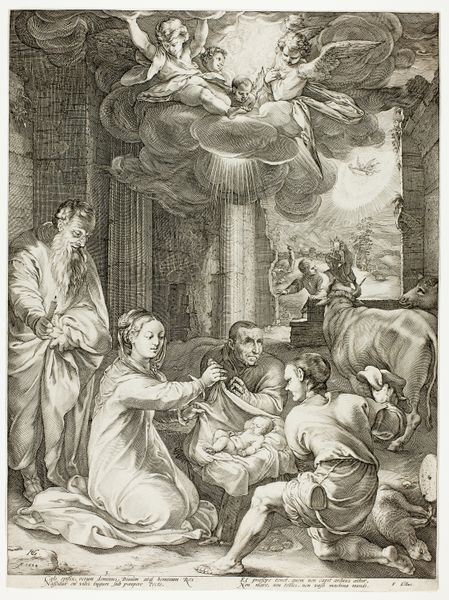
painting, oil-paint, mural
#
allegories
#
venetian-painting
#
allegory
#
painting
#
oil-paint
#
classical-realism
#
perspective
#
figuration
#
oil painting
#
chiaroscuro
#
mythology
#
history-painting
#
italian-renaissance
#
mural
Copyright: Public domain
Curator: What a dynamic composition. There’s an immediate sense of movement pulling the eye upward, it's so airy, ethereal almost, but there’s definitely a heaviness too. Editor: Indeed. This oil painting is titled "Mortal Man Guided to Divine Eternity" by Paolo Veronese, completed in 1561. Veronese, of course, was a master of the Venetian Renaissance, a period rife with such allegorical narratives. Let’s consider the visual language Veronese employs. Curator: Right. We see a muscular figure, presumably mortal man, cloaked, and seemingly guided or supported. Are we to assume it is a patriarchal and perhaps exclusionary approach to divinity, reflected through the muscular man needing support to achieve eternal ascension? How might audiences during that era, steeped in religious dogma, have read this dynamic? Editor: Contextually, we must remember this work belongs to the tradition of history painting, aiming not just to depict a scene, but to impart moral instruction, in this case about faith, divine intervention, and what that looked like during that period, and whom it catered towards. The upward gaze invites viewers to consider that very path of mortality to divinity, but you are correct; let’s not assume that path was available to all during that historical setting. Curator: And the symbolism… that woman pointing to a crown suspended in air amidst a rainbow arc. A very unsubtle way of broadcasting the promise of eternal life through virtuous guidance and leadership. It brings to mind power dynamics – who defines that virtue, who controls that path, especially in terms of gender and class? Editor: Absolutely. Also, note how Veronese strategically employs chiaroscuro. See how the figures in the foreground possess more intense lighting while the colors fade upward toward the ethereal skies. This pulls us deeper into this allegorical narrative. We see this again and again with these mural sized allegories and their attempt to create a visceral experience within its viewers to emulate certain behaviors or codes of conduct within its communities. Curator: The tension between earthly weight and heavenly ascension speaks volumes about societal anxieties surrounding mortality during the Italian Renaissance and even to this day. Editor: Agreed. Exploring pieces such as this highlights art’s vital role as a lens through which we perceive not only history, but also the social, and even spiritual frameworks in which they were conceived. This one definitely prompts essential inquiries for our audiences, no matter the background or entry-point.
Comments
No comments
Be the first to comment and join the conversation on the ultimate creative platform.
